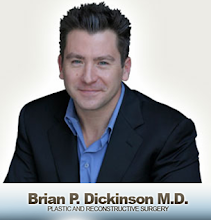
In nasal airway surgery, it is a great compliment when involuntarily the patient closes her mouth and breathes through her nose in the post operative photograph.

As an associate to world rhinoplasty expert Dr. Jay Calvert, I am constantly learning about complex airway surgery, secondary rhinoplasty with rib graft, and total nasal reconstructions.
Since Dr. Calvert often speaks both nationally and internationally about rhinoplasty, it is important as his associate that I understand about the pre-operative, operative, and post-operative care of the rhinoplasty patient. Being Dr. Calvert's associate is demanding, but the rewards are great. The reading list to begin understanding Dr. Calvert's practice, started with Dr. Daniel’s book, Rhinoplasty: An Atlas of Surgical Techniques.
As an associate to Dr. Calvert, my own airway reconstruction and rhinoplasty practice has started to grow. One of the more interesting observations in my patients is the ancillary findings on physical examination. Usually, I appreciate an unintentional open mouth smile in my post-operative photographs. However, for airway reconstructions, I am most pleased when the mouth is involuntarily closed. In these cases, I am convinced that the nasal airway is patent and the airway surgery was successful.
At this point in my career, I have found that an optimal view of a deviated septum is best obtained via an open rhinoplasty incision. This approach allows separation of the lower lateral cartilages, visualization of the entire septum, and an optimal view through which to perform septoplasty. The harvested septum is then used for spreader grafts to support the internal nasal valve. I have been very happy with the use of septal cartilage for lateral crural strut grafts to stabilize the external nasal valve.
Since Dr. Calvert often speaks both nationally and internationally about rhinoplasty, it is important as his associate that I understand about the pre-operative, operative, and post-operative care of the rhinoplasty patient. Being Dr. Calvert's associate is demanding, but the rewards are great. The reading list to begin understanding Dr. Calvert's practice, started with Dr. Daniel’s book, Rhinoplasty: An Atlas of Surgical Techniques.
As an associate to Dr. Calvert, my own airway reconstruction and rhinoplasty practice has started to grow. One of the more interesting observations in my patients is the ancillary findings on physical examination. Usually, I appreciate an unintentional open mouth smile in my post-operative photographs. However, for airway reconstructions, I am most pleased when the mouth is involuntarily closed. In these cases, I am convinced that the nasal airway is patent and the airway surgery was successful.
At this point in my career, I have found that an optimal view of a deviated septum is best obtained via an open rhinoplasty incision. This approach allows separation of the lower lateral cartilages, visualization of the entire septum, and an optimal view through which to perform septoplasty. The harvested septum is then used for spreader grafts to support the internal nasal valve. I have been very happy with the use of septal cartilage for lateral crural strut grafts to stabilize the external nasal valve.
